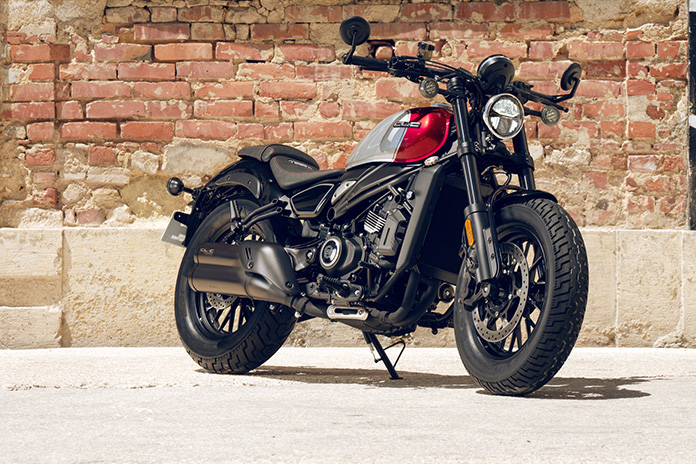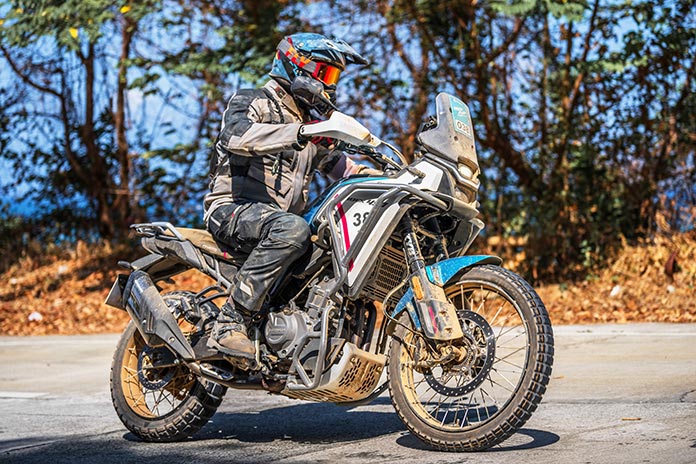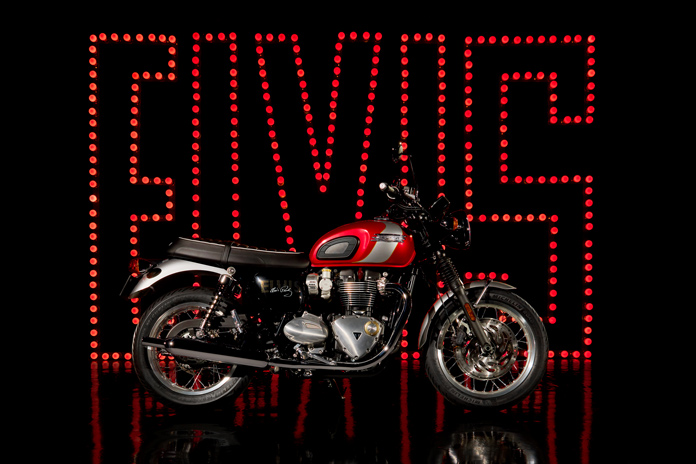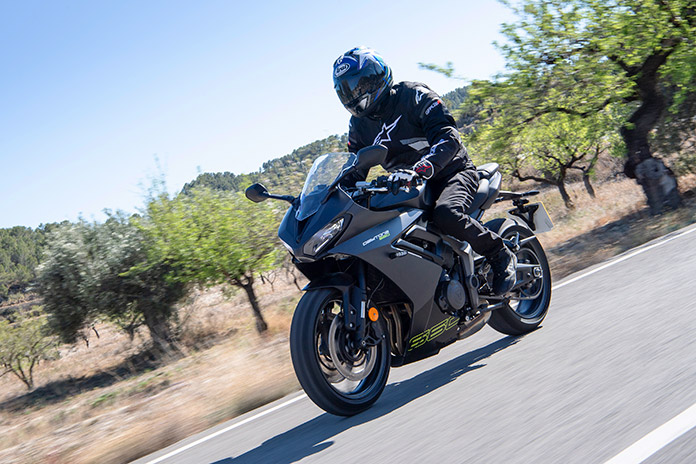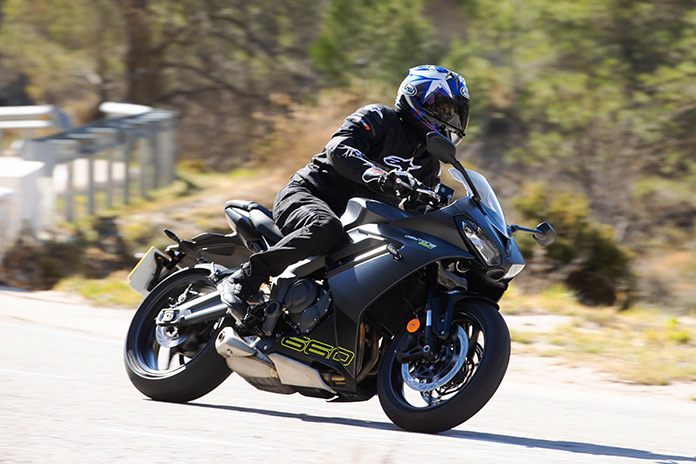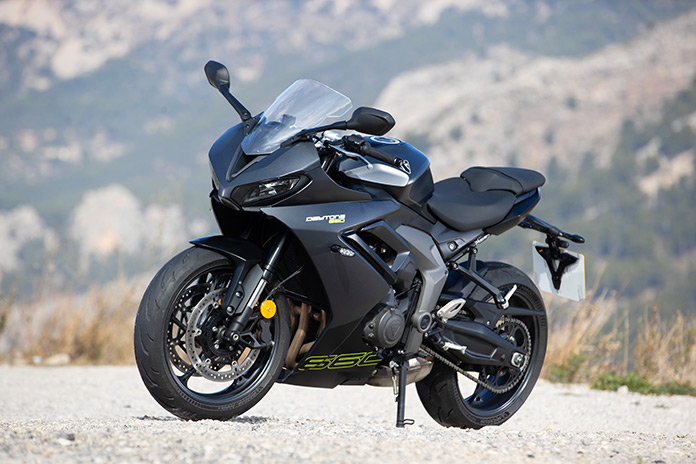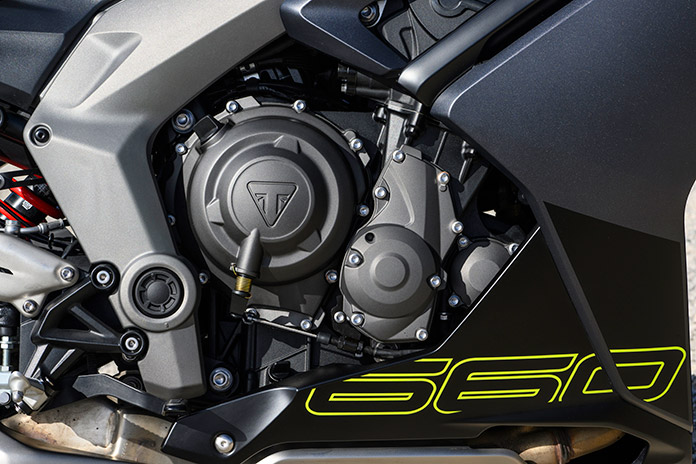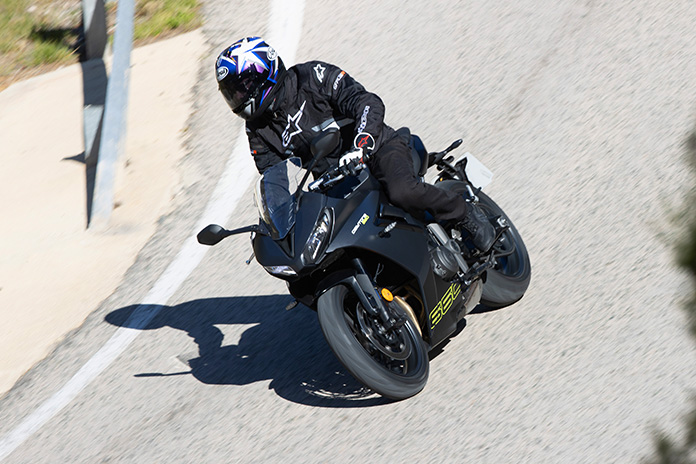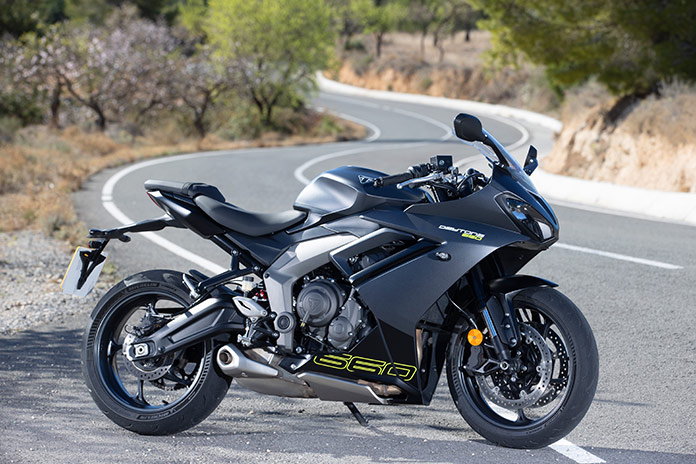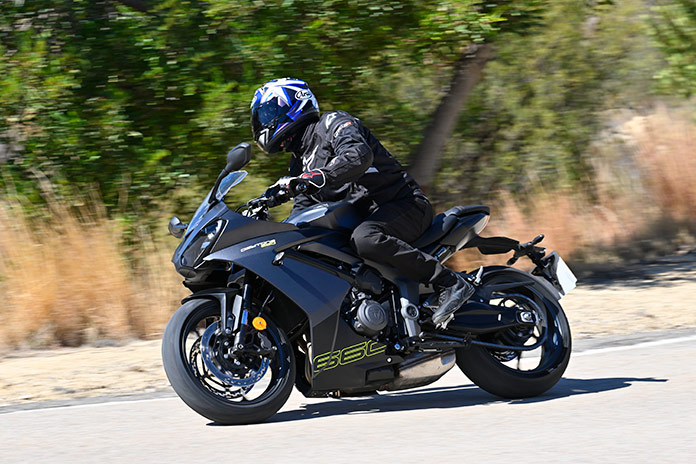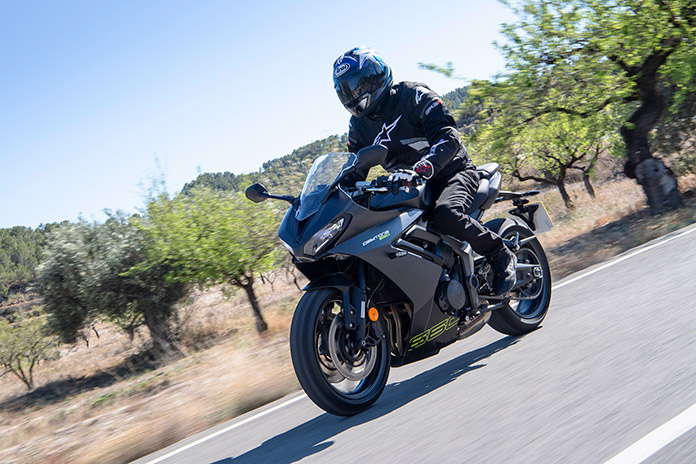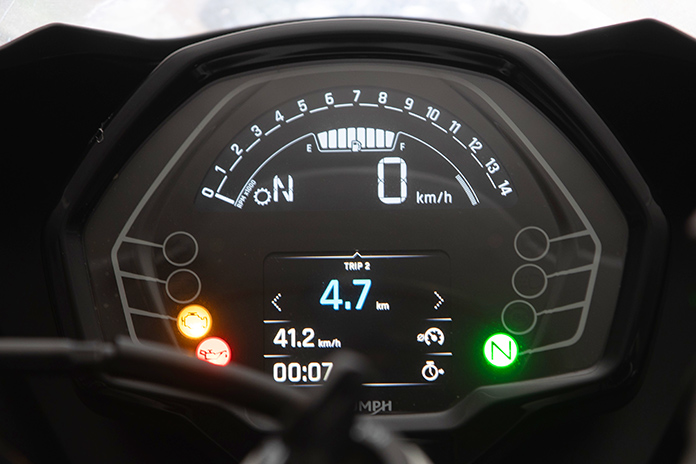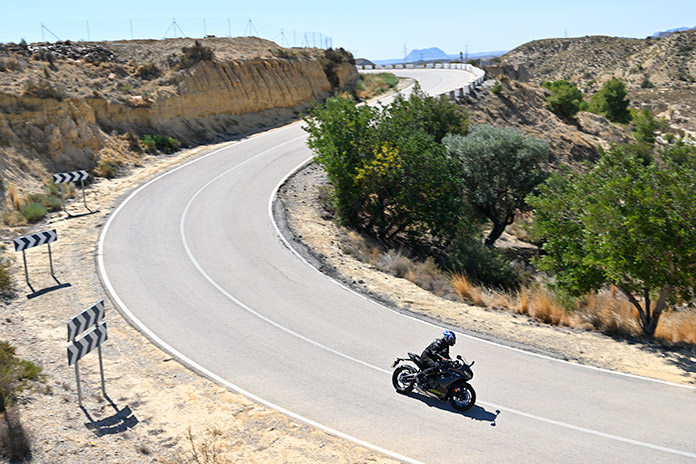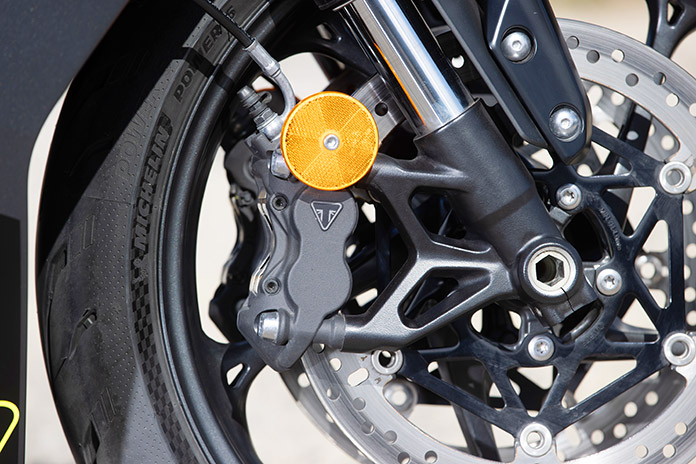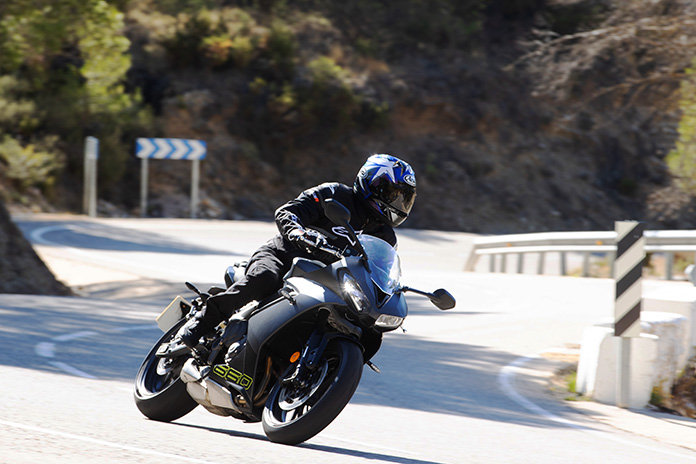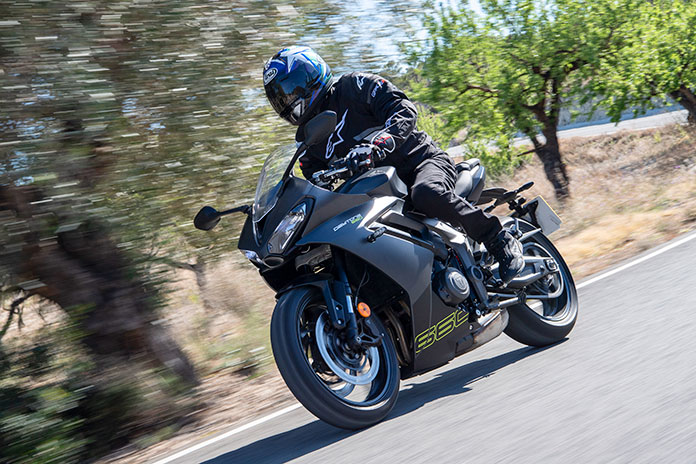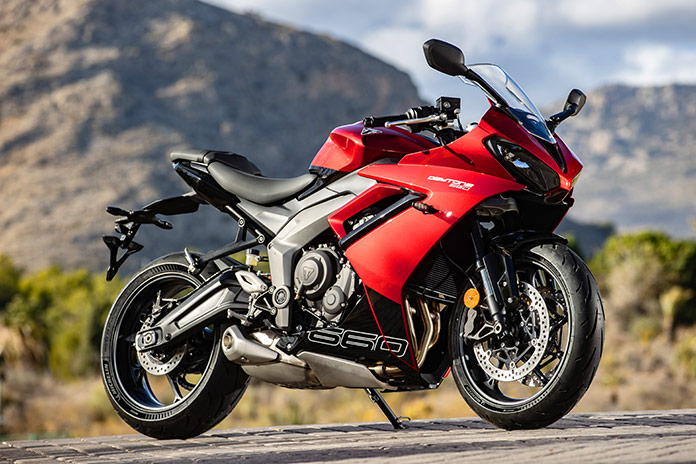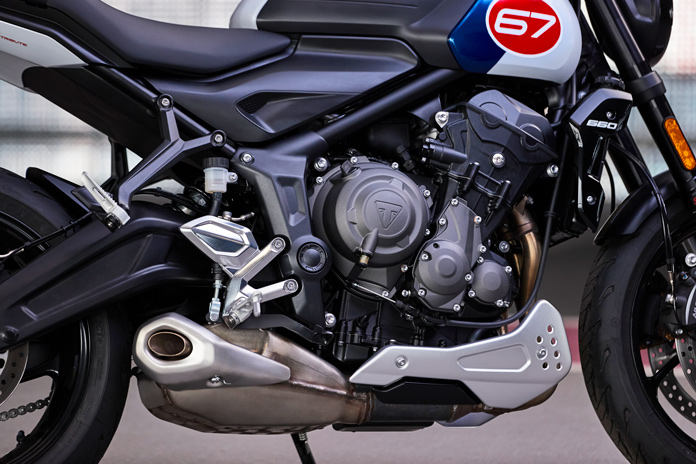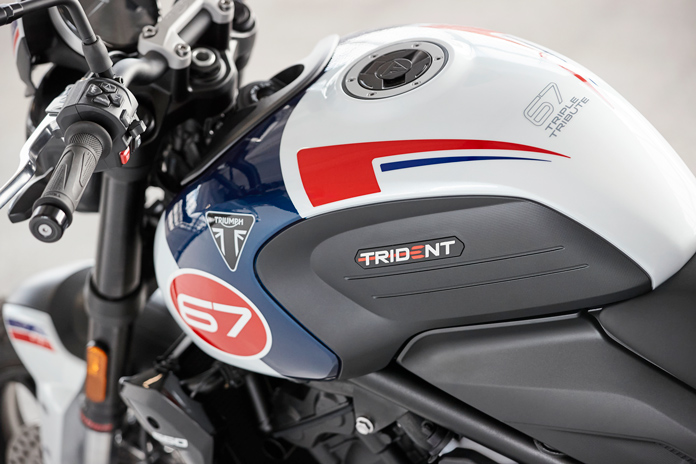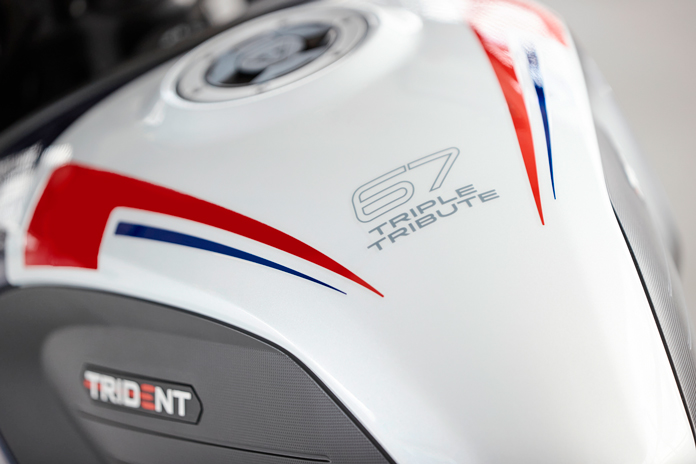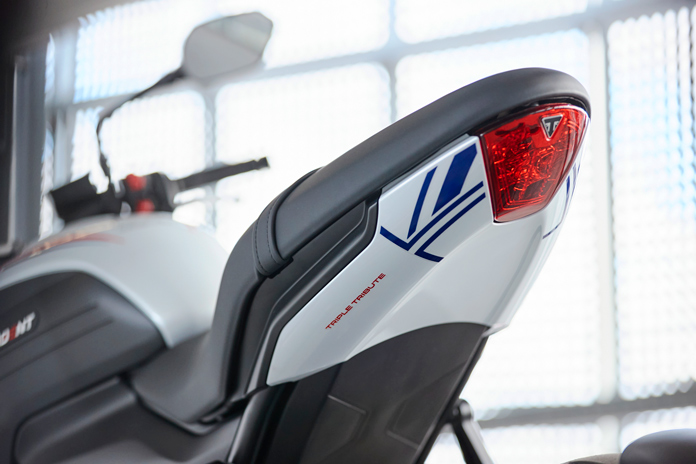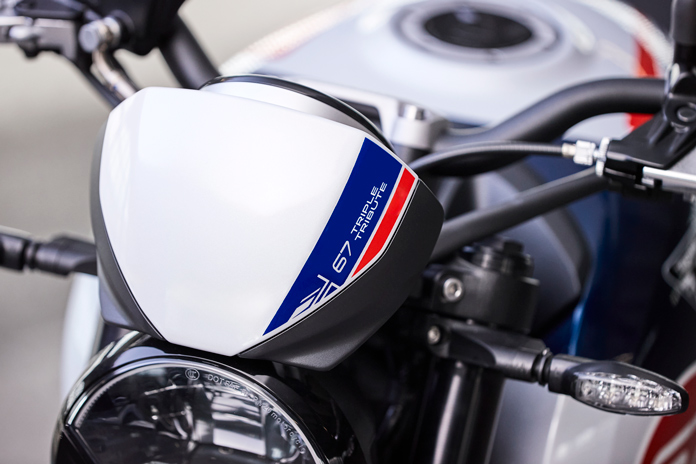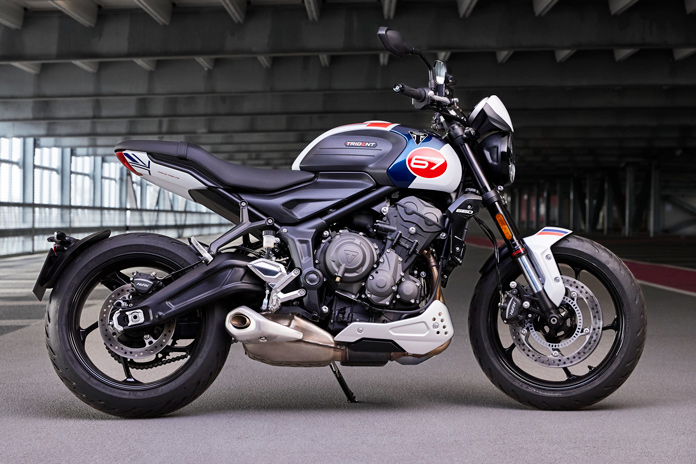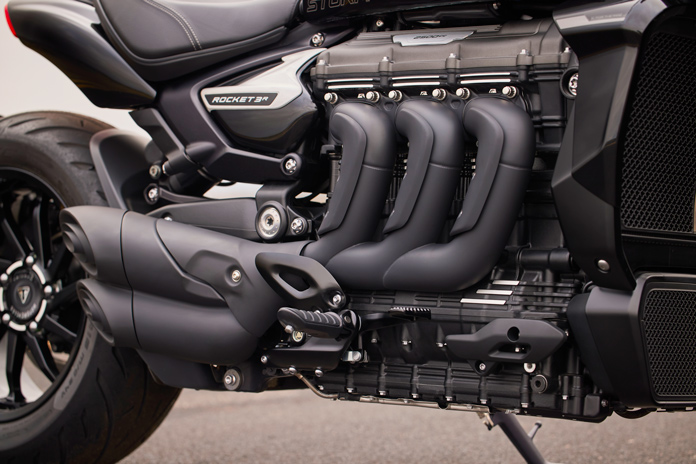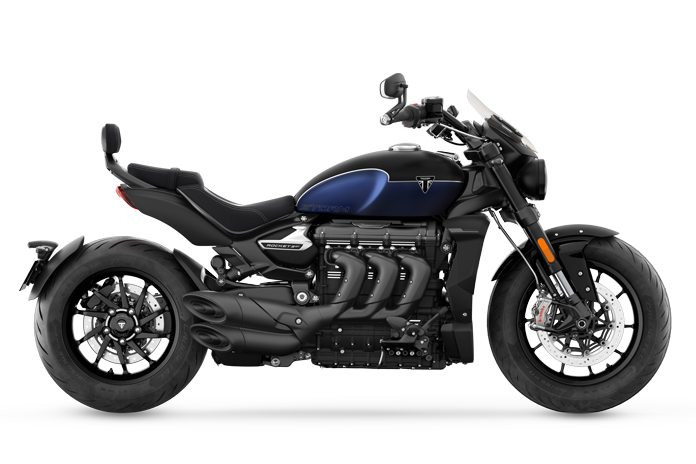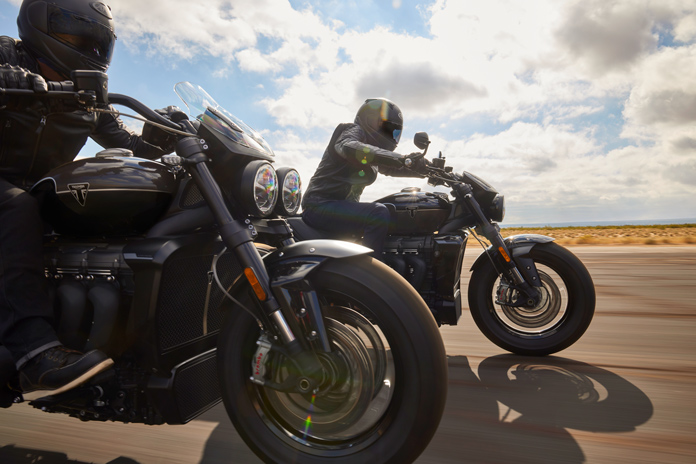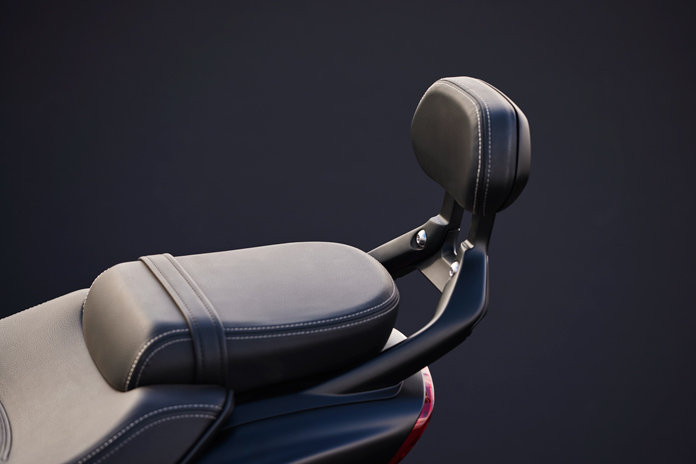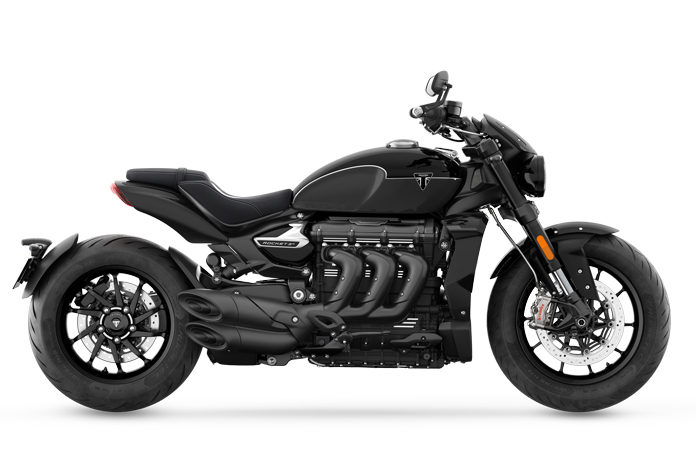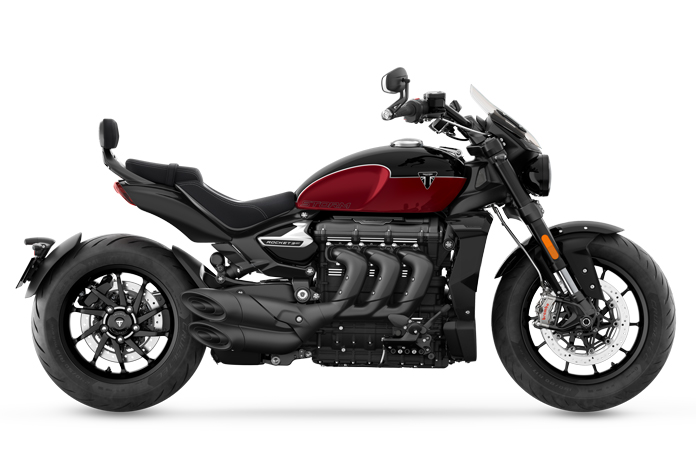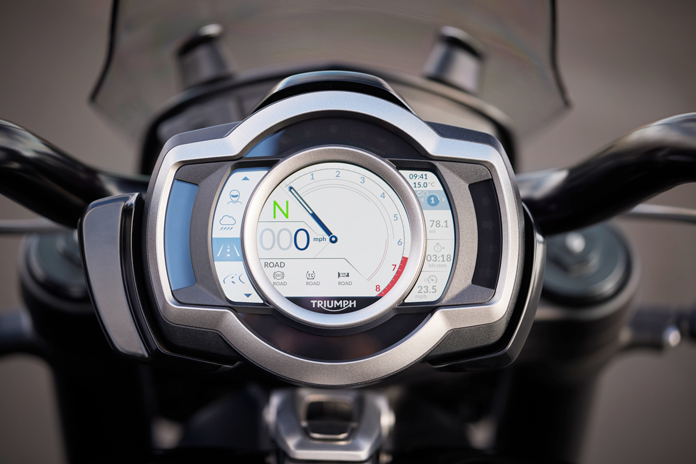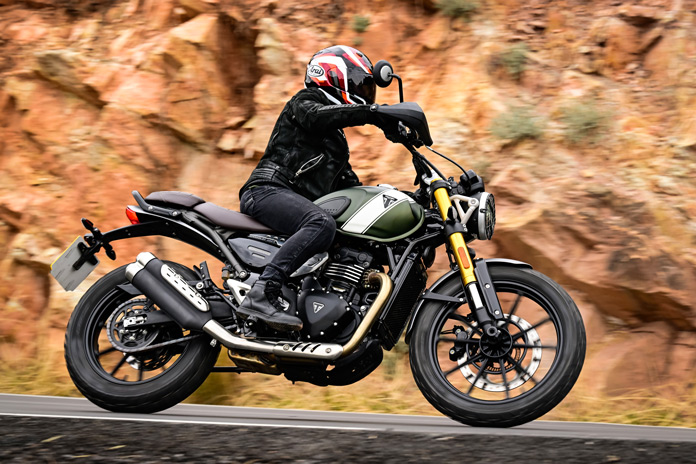This 2025 motorcycle buyers guide highlights new or significantly updated street-legal models available in the U.S. As with previous buyers guides, we will also include 2026 teasers as soon as manufacturers let us know about them. We will continually update this guide as new models are available, so be sure to bookmark this page and check back often.
Check out our 2024 Motorcycle Buyers Guide: New Street Models
Organized in alphabetical order by manufacturer, our guide includes photos, pricing, key update info, and links to first looks or – when available – Rider‘s first rides, road tests, and video reviews of the motorcycles.
2025 CFMOTO 450CL-C
The 2025 CFMOTO 450CL-C is new cruiser from CFMOTO powered by a liquid-cooled 449cc parallel-Twin with DOHC, a 270-degree crank, and dual counterbalancers mated to a 6-speed transmission, a slip/assist clutch, a Gates belt final drive, and a dual-chamber exhaust coated in a matte ceramic finish. Braking is provided by J.Juan, and ABS and traction control are standard. The 450CL-C rides on a 58.5-inch wheelbase and has a 28-degree rake, 4.25 inches of trail, and a 27-inch seat height.
The 2025 CFMOTO 450CL-C will come in Bordeaux Red and Nebula Black and start at $5,699.
Read our 2025 CFMOTO 450CL-C First Look Review
2025 CFMOTO Ibex 450
The 2025 CFMOTO Ibex 450 features a liquid-cooled 449cc parallel-Twin with DOHC, a 270-degree crank, and dual counterbalancers mated to a 6-speed gearbox with a slip/assist clutch. It has a standard Ride mode and an Off-Road mode. The bike has J.Juan braking components with ABS that is switchable at the rear, as well as switchable traction control. The Ibex 450 has a fully adjustable KYB inverted fork and a central-aligned, multi-link rear monoshock with adjustable damping and preload.
The bike has an adjustable handlebar and a 32.3-inch seat height/ride height that can be lowered to 31.5 inches via an integrated lowering link. It has 8.7 inches of ground clearance, and it rides on tubeless, cross-spoke rims. The 2025 CFMOTO Ibex 450 will come in Zephyr Blue or Tundra Grey and start at $6,499.
Read our 2025 CFMOTO Ibex 450 First Ride Review
2025 Indian Scout Lineup
In its first major revamp since its 2015 debut, Indian’s Scout cruiser platform is all-new from the ground up, and the 2025 Indian Scout lineup includes five models: Scout Bobber, Sport Scout, Scout Classic, Super Scout, and 101 Scout. Three trim levels will be available, as well as more than 100 dedicated accessories.
At the heart of the Scout platform is a new engine called the SpeedPlus 1250. The V-Twin remains liquid-cooled but is redesigned, punched out from 1,133cc to 1,250cc. Power goes up to 105 ponies and 82 lb-ft of torque, and the 101 Scout gets a bump to 111 hp. Also new is the Scout’s frame, switching from an aluminum design to a simpler steel-tube chassis. It supplies a 61.5-inch wheelbase with a 29-degree rake and 4.8 inches of trail. The Scout has a low 25.6-inch seat height. There are also new features and technology offered on certain Scout models and trim packages. All models except for the 101 Scout use a single 298mm front disc brake with a 2-piston caliper, and ABS is standard.
The Indian Scout Bobber has an MSRP of $12,999, the Scout Classic is $13,999, the Sport Scout is $13,499, the Super Scout is $16,499, and the 101 Scout is $16,999.
Read our 2025 Indian Scout Bobber First Ride Review
2025 KTM 990 RC R
The 2025 KTM 990 RC R is KTM’s only street-legal, liter-class supersport is powered by a LC8c powerplant with a new ergo-crafted and condensed stainless steel muffler and a shifter that can be reversed to race-shift as standard. The steel frame has increased weight bias towards the front end and a steering head angle of 25 degrees. It also features a new fuel tank shape, adjustable footrests, fully adjustable WP APEX Open Cartridge Suspension, and lightweight cast aluminum wheels wrapped in Michelin tires.
Pricing for the 2025 KTM 990 RC R has not yet been announced.
Read our 2025 KTM 990 RC R First Look Review
2025 Moto Morini Corsaro 750 and Corsaro Sport
The 2025 Moto Morini Corsaro 750 naked and fully faired Corsaro Sport are both powered by a new 749cc 90-degree V-Twin and share Brembo braking components, standard ABS, a fully adjustable inverted fork, and a progressive link rear shock. The Corsaro Sport gets a wider rear tire, clip-on handlebars, a taller seat, and more bodywork compared to the Corsaro 750.
Pricing on the bikes has not yet been announced.
Read our 2025 Moto Morini Corsaro 750 and Corsaro Sport First Look Review
2025 Moto Morini X-Cape 1200
The 2025 Moto Morini X-Cape 1200 features the new 1,187cc V2 Corsa Corta EVO engine, an 87-degree V-Twin designed and engineered in Italy and making a claimed 122 hp. The new adventure bike features Brembo braking components, switchable cornering ABS, a fully adjustable fork, and a progressive link shock.
The Moto Morini X-Cape 1200 has a tubular trellis frame and a 33.8-inch seat height. An aluminum luggage rack is included as standard equipment. Pricing has not yet been announced.
Read our 2025 Moto Morini X-Cape 1200 First Look Review
2025 Triumph Bonneville T120 Elvis Presley Limited Edition
The 2025 Triumph Bonneville T120 Elvis Presley Limited Edition is limited to only 925 units worldwide and celebrates Elvis and his Memphis Mafia group of friends who rode on Bonnevilles. The Bonneville T120 Elvis Presley Limited Edition has been crafted to honor its namesake, including its Carnival Red color scheme, “ELVIS” gold lettering on the tank, Elvis’s signature on the tank and side panels, and the “Taking Care of Business in a Flash” emblem on the front fender.
The 2025 Triumph Bonneville T120 Elvis Presley Limited Edition will be available starting at $15,495 and will arrive in dealerships starting in September 2024.
Read our 2025 Triumph Bonneville T120 Elvis Presley Limited Edition Preview
2025 Triumph Rocket 3 Storm R and GT
To celebrate 20 years of the Rocket 3, a muscle bike with the largest engine in a production motorcycle, Triumph has unveiled the 2025 Triumph Rocket 3 Storm R and Rocket 3 Storm GT. Their 2,458cc in-line Triple cranks out even more power – up 15 ponies to a massive 180 hp and 166 lb-ft of torque (up 3).
The Rocket 3’s 16-inch rear and 17-inch front wheels have been updated with a 10-spoke cast-aluminum design. They have an lightweight aluminum frame that uses cast and forged elements, dual Brembo Stylema front calipers with 320mm discs, and a Brembo M4.32 rear caliper with a 300mm disc.
They come with lean-sensitive cornering ABS, traction control, Ride-by-Wire, a Torque Assist clutch, Hill Hold, four ride modes (Road, Rain, Sport, Rider-configurable), cruise control, a keyless ignition and steering lock, and a USB charging socket. Instrumentation comes in the form of a color TFT.
The 2025 Rocket 3 Storm R will be available in Carnival Red with Sapphire Black, Satin Pacific Blue with Matte Sapphire Black, or Sapphire Black with Granite for $24,995. The 2025 Rocket 3 Storm GT will be available in the same colors but with the color split of the tank reversed, retailing for $25,795.
Read our 2025 Triumph Rocket 3 Storm R/GT First Ride Review
2025 Triumph Speed Triple 1200 RR Breitling Limited Edition
The 2025 Triumph Speed Triple 1200 RR Breitling Limited Edition will be limited to only 270 units, and Breitling will also launch a special Triumph watch in conjunction with the motorcycle. The bike features a bespoke paint scheme with premium gold hand-painted detailing, a leather seat with French stitching, a high-spec Akrapovič silencer, and lightweight carbon fiber parts. It will also include a custom Breitling start screen, the Breitling logo laser-etched onto the machined rear wheel finisher, and a gold Breitling badge on the tank.
The 2025 Triumph Speed Triple 1200 RR Breitling Limited Edition will be available starting in June 2024 with an MSRP of $25,995.
Read our 2025 Triumph Speed Triple 1200 RR Breitling Limited Edition Preview
2025 Triumph Trident 600 Tribute Special Edition
Celebrating Triumph’s rich racing history is the new 2025 Triumph Trident 660 Tribute Special Edition, which features a race-inspired graphic scheme, Triumph Shift Assist, and a flyscreen. The Trident 660 is powered by a liquid-cooled 660cc Triple that makes a claimed 80 hp at 10,250 rpm and 47 lb-ft of torque at 6,250 rpm. It has a seat height of 31.7 inches and a weight of 416 lb. Throttle-by-wire allows two ride modes (Road and Rain), and it comes with ABS, switchable traction control, and a combined TFT and LCD display.
The 2025 Triumph Trident 660 Tribute Special Edition adds a white, blue, and red graphic scheme inspired by “Slippery Sam,” as well as a Number 67 race graphic, a flyscreen, and Triumph Shift Assist, which enables clutchless up and down gear changes with an autoblipper on downshifts for smoother changes.
The 2025 Triumph Trident 660 Tribute Special Edition will be available for one year only with an MSRP of $8,595.
Read our 2025 Triumph Trident 660 Tribute Special Edition First Look Review
The post 2025 Motorcycle Buyers Guide: New Street Models appeared first on Rider Magazine.
Source: RiderMagazine.com


